A few weeks ago, the city government jump-started its campaign to educate people about a new mass transit system, which, although probably relatively unknown to most Cebuanos, had already been proven to be very cost-efficient and effective in other parts of the world. I was one of the lucky few who got invited to this seminar which was personally handled by Cebu City’s City Planning and Development Coordinator Sir Nigel Paul Villarete. The BRT seminar didn’t make me an expert, true, but I must say that 90% of my ‘uneducated’ questions about the system were answered.
Just last week, news of the proposal of the implementation of yet another system shocked Cebu. Congressman Gullas so boldly declared that he will bring LRT to this little island of ours.
To daydreamers (like myself. LOL) the possibility is orgasmic. Cebu, a little unknown island with people living their lives quietly, will have a kick-ass mass transit system? That’s one tempting probability.
But before we all make a decision and place our bets, let’s have a deeper understanding of the similarities, differences, advantages, and disadvantages of the two systems.
So which is which? BRT or LRT?
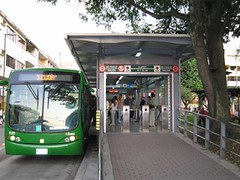

Similarities
BRT and LRT both operate on two very similar principles. In fact, the two systems are very similar that almost all components necessary to operate the LRT are also necessary to successfully operate the BRT. It is said that the two systems are so alike that you wouldn’t know the difference when you board either of them with your eyes closed.
Extra: SSC-Cebu during the BRT Orientation Seminar held at the Mayor’s Conference Room last September 26, 2009. City planner Sir Paul Nigel Villarete wasn’t in this photo because he left the room for a short while. Hehehe.
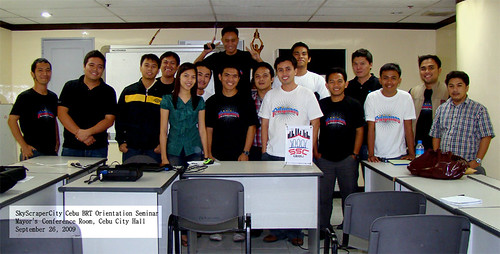
Differences
The major component that makes LRT different from BRT is the ‘carrier’ used to move a huge number of people from one point to another. Clearly, LRT utilizes trains. BRT, on the other hand uses buses.
But the list doesn’t end there. Read on for more information.
– The government will have to spend a lot for the construction, maintenance, and operation of LRT terminals and rails. It is said that the 16.8 kilometer-EDSA MRT is subsidized by the Government at US$7.5 billion annually. In short, the entire nation is paying for this annual expenditure which is only being used in the capital. To operate the LRT, $15million to $40 million is needed for every kilometer. To operate the BRT, $500,000 to $15 million is needed per kilometer.
– The proposed LRT will cost P28.94 Billion. The proposed BRT will cost P3.6 Billion.
– BRT will utilize an exclusive bus lane. The system can run on an already existing road. It can also operate on pocket/special/new roads constructed mainly for the system. LRT will utilize an exlusive ‘passageway’ which can be built above or below ground.
– A major component of the BRT is the construction of public walkways and bikeways. The system therefore, gives back to the pedestrian the space that they need and deserve.
– The city government plans to implement BRT in 2013 or 2014.
– New railways will have to be constructed to accommodate the LRT. The initial plan is to build a railway in the middle of Jones Avenue traversing the Fuente circle.
– The rumored initial pilot route of the BRT is from Talamban to Pardo. According to Mr. Villarete, the system will be implemented first in Cebu City to avoid possible delays in case the mayors of Talisay, Mandaue, or Lapulapu refuse to support the plan.
– To maintain the LRT tracks, Geometry trains, x-ray trains, and vacuum trainsare needed. Geometry train check the contour and vibration of the train caused by the track. X-ray trains check for metal fatigue on the rails, like crack and gaps. vacuum trains pick-up garbage on the tracks.
LRT Line 1 in Metro Manila. This photo was taken inside the Monumento Station in Caloocan City. I didn’t know that taking photos inside the station was prohibited. That explains why people were staring at me. Hehe.
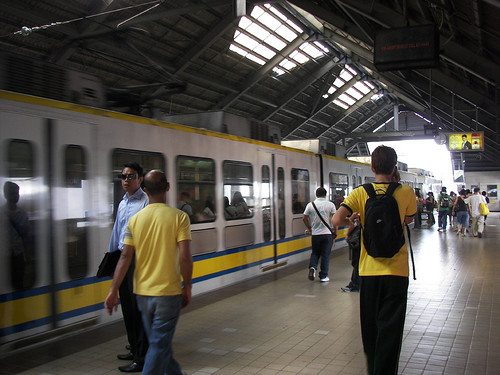
A covered ‘walkway’ which connects LRT Line 1 and LRT Line 2.
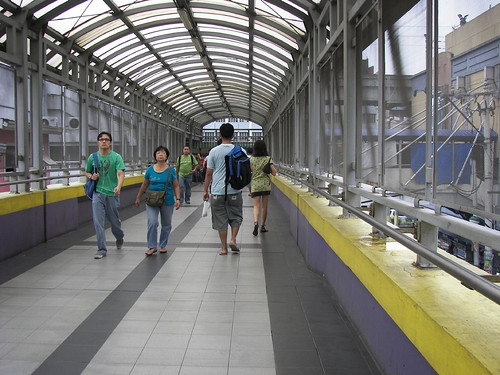
LRT Line 2. After taking this photo, a kind young man told me that picture-taking was prohibited and that my camera could get confiscated. Hehehe.

The LRT in Marikina City.
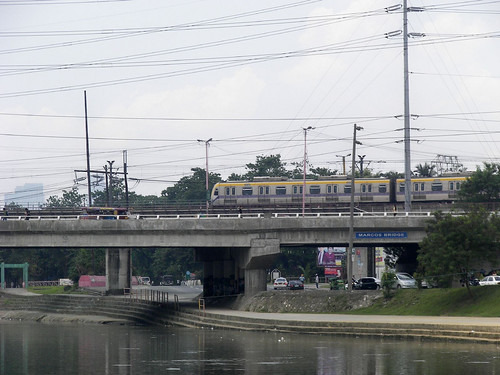
The LRT in action in Taft Avenue.

A BRT station can look as simple as a bus stop or as lavish as a monorail station. Here is an example of a simple BRT station.
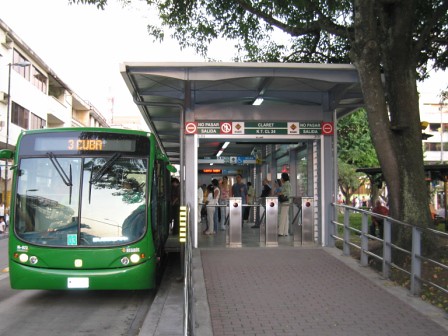
Passengers waiting inside a BRT Station.
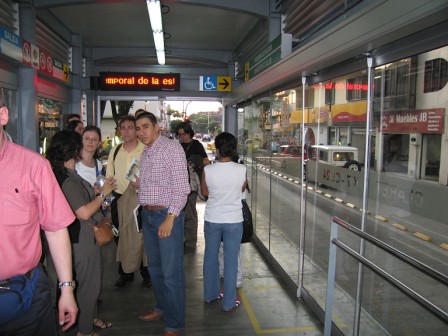
Most BRT buses look like ordinary buses (size-wise). Some BRT buses, however, can have ‘multiple cars’ and can look like this one in Germany.
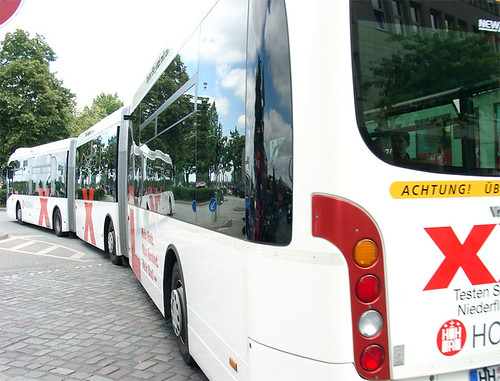
A nice-looking terminal in Xiamen.
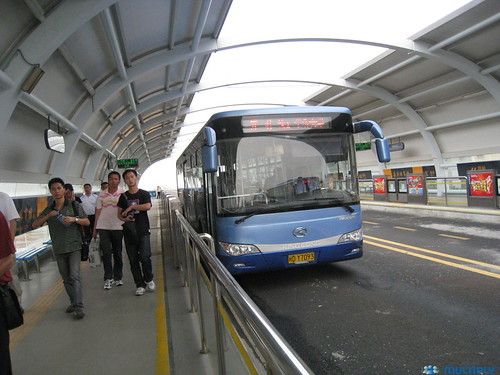
This system makes use of a ‘specially constructed’ busway. Very nice.

Xiamen BRT in action.
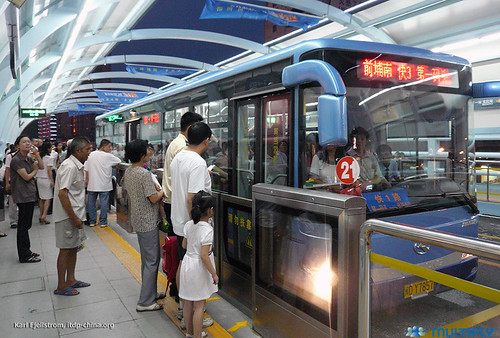
Passengers boarding the bus.

A Xiamen BRT terminal at night. Really gorgeous.
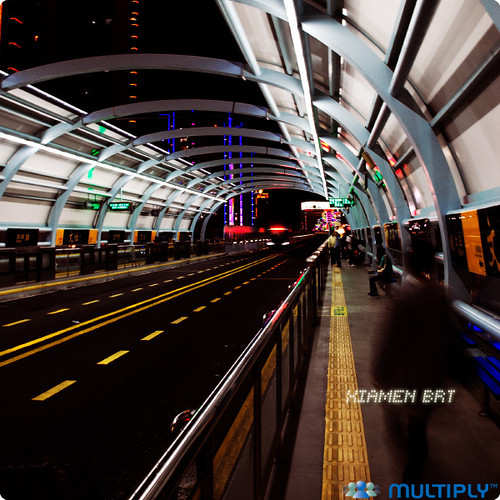
[polldaddy poll=2147437]
(Photos by @zidlakan of SSC-Cebu, @slerz of SSC-Cebu, me, dpinpin of Flickr, pereira of SSC-Philippines and other SSC-Philippines forumers.)

The interaction sa SSC really opened the eyes of so many people…… as for me, BRT should be the topmost priority due to its advantage (financially) than the LRT. . . . One of the reasons why I did not buy a car here in London is that, I can rely on their transportation all the time . . . Daghan streets diri nga parehas ka gamay sa Colon and yet Buses operate without a hassle….ang kinahanglan sa atoa kay massive information campaign dyud, and not just politicking (mao ni tan aw nako sa timing ni Gullas) just to spark interests from the public…..
Ako pud, mas nice ang BRT. Mas maau para Cebu. I really hope madaun ni.
Ok ko sa BRT kay sayon ra sa pag expand later. Kinsay mo-operate niini? Private company or ang gobierno? Angay mahibaw-an daan kon mo-apil ba ni sila unya sa mga transport strikes nga ipatuman sa mga operators ug sakyanan.
Pero worried sab ko kon mosaka ang oil prices. Basin ug variable pod unya ang plitehan segun sa gusto sa mga oil companies. Lain nga concern mao ang mga sidewalk vendors nga maka-bara sa walkways ug maka-huot hinuon sa agi-anan
my view on this, if w/in metro cebu and including lapu-lapu i think BRT is logical. if for entire cebu (also my dream) LRT is more appropriate. regardless of what type of system to pick and when it is functional, the puj’s should be moved to secondary roads so as not to congest main avenues in the cities where the B/LRT cars pass. provided, that the system is very, very efficient and is maintain according to international standards.
hehehe. BRT nalang
lrt would be fantastic, but i reckon its going to be brt 🙂
Definitely, I’d be for BRT.
maayo na da… BRT or LRT…
Ang pangutana asa man ang mga ruta ana???? OSLOB padung BOGO
or vice versa…. bitaw maayo nang BRT kay minos ug GASTO… ug mapalpak
dikaayo gool… sigi.. go..go..go..go BRT…. ATO ni BAY kitay una sa SUGBO.
grabe sad nang bogo to oslob sir oi. hehehe. but let’s cross our fingers basin madayon diay kung madayun ang brt. hehehe. i think ang pilot area route kay talamban to pardo…
let me post this comment from Bel. this was postead in the comment section of the poll:
ill try to answer your questions. hehehe
i don’t think that would be possible (using old buses and v-hires). in order for the BRT to be successful, it has to have a particular branding. a lot of forumers agree that the BRT Cebu line should be named SINULOG. if this will be approved, SINULOG will be a unique brand which can either make or break the system. i don’t think you would want the buses that we have now to carry that brand. hehehe.
one of the main goals of a mass transit system is to move people from one point to another in a fast, efficient, and effective manner. with BRT in operation, the government would hopefully be able to lure people into patronizing it (seeing that it is indeed effective and efficient). more people will stop driving their own cars and instead opt to ride the bus. in short, lesser cars, lesser pollution. plus, as an added bonus of the BRT – walkways and bikeways will be constructed.
According to Mr. Villarete, drivers and even operators will be given priority once the system is in place. this means that drivers will be given jobs and operators might be included in different BRT-related government deals.
in my own opinion LRT is better for the long run, i know Cebu is an island and such a small area to cover esp. w/LRT but mind you this….. i was in korea twice and they have such an excellent LRT system considering a tight land mass, land area wise, pinas has more land mass area compared to korea…. their LRT system is a genius masterpiece combined with excellent architectural planning and engineering…. dave and i loved the public transportation while their, even written on hangul the instructions are well understood and foreigner friendly… if they can do it there is no reason why we pinoy can’t! the only difference i guess it that koreans have almost zero to nothing tolerance w/corruption…. pls. no pun intended to pinoy!
Hi, I found this blog quite interesting . Regarding LRT, we don’t have to be an engineer to found out its gross disadvantages as compared to BRT. It costs so much to maintain, draining our gov’t. coffers just to “please” the pockets of the politicians who are promoting this type of mass transit in Cebu. All of a sudden, these politicians are turning the heat for LRT where in fact there is an ongoing study financed by World bank for the establishment of BRT in Cebu. Why can’t they wait for the BRT study to be finished? They really like big ticket projects coz’ the “money” is there regardless of its consequenses. No wonder, our country cannot progress because of these corrupt and lousy gov’t. officials.
@chris
According to a University of the Philippines (UP) study, the LRT system would cost about P40 million per kilometer while the BRT system would cost only P15 million per kilometer
i would go for BRT. Lessen jeepneys and taxis. Also educate commuters and motorists too.
I am convinced that BRT is far better than LRT. BRT is less costly and pro-poor. Why do we need to spend much when there are better options?
I support BRT for Cebu!
As for me, BRT is more logical right now. Do that first, then think about LRT later on. I know for sure this will eliminate the jeepney transportation, that means less pollution & less traffic congestion. 🙂
i support BRT. then walaon na ang mga jeepneys in the city. nice nang idea, just like in paris, most people will either ride a bike or motorcycle, less pollution pa and relieve traffic congestion.
let me add also, dapat naa pud ang kalesa sa city, mas daghan tourist ganahan ani, just like in NY.
maayo unta LRT good for entire Cebu, kanindot jud from Bogo to Samboan direkta ra.
heheh. yes mao jud. mau unta sah..
ako pod i am for brt mas feasible cya sa cebu city
sa cost lang daan
kon gusto ni gullas butangan ug train sa cebu yaw na ang lrt katong like pnr sa luzon nga maka karga ug goods unya straight line ra santander to daan bantayan then 1 station ra ibutang sa cebu city diha ra sa pier i integrate tanang station diha brt jeep ug uban pa. aron ang mga taga probinsya inig abot nila gikan sa barko diritso na sa train sakay. dili na moanha sa cebu bus terminal.then mga dako nga track mo minos na sa kadalanan nana man train.hehehehehe
advantage pana sa taga province ug sa city
mga guys sa ssc salamat sa inyong forum na educate pod ko anang brt ug lrt
go brt go brt
BRT is best for Cebu. LRT is jus plain vanity. Para ingnon lang nga naa ta. hehe
BRT is just a glorified/fancy name for “autobus”! next thing you know after many years of neglect it will turn into just another crapy bus….. at the beginning it might sound appealing ” BRT” but wacth after several years it will just be another bus but this ones an expensive bus! imagine someone-@Bel suggested to use the existing Cebu bus/V-hire! see, this is what I’m talking about developers/gov’t official cannot get away w/old bad habits of recycling already recycled old buses…. at the long run, this concept can be compared to an old car wheel w/c turns round and round in circle going nowhere, no progress…..
why not build the LRT underground! just like in europe and some parts of asia… as what @noli is refering to qoute and qoute “the system is very, very efficient and is maintain according to international standards” pinas/cebu wants international standards then let’s do it!
we might want to think of the expenses. The proposed LRT will cost P28.94 Billion. The proposed BRT will only cost P3.6 Billion. If we try to analyze it, 28.94B might even be enough to put BRT lines in argao and carcar.
and since the system has to earn maybe after three or five years of being subsidized, i don’t think it will earn a lot considering the number of people in metropolitan cebu. midtown cebu is basically a ghost town at 7:30 pm.
regarding the concern about using old buses, i think there is really nothing to worry about. since the system will focus greatly on branding, i don’t think the committee would use old buses. that would destroy the brand. also, BRT will be handled by a consortium. the group will be paid by kilometer and not by the number of people transported. so, unlike the regular bus lines, it will ply its route right on schedule and not wait for passengers just like regular buses.
BRT or LRT is just a bunch of mambo jumbo…..
just another false propaganda!!!!
pls elaborate why you stated that these projects are sort of propaganda, ok?
I’ll always go for BRT if I’m not in a hurry. The reason is because, the BRT is more spacious, most of the time seats are always available, the aircon is so cool and it is very comfortable after the long day of work. But if I’m in a hurry, there will be no choice for me but to take the MRT.
ART – aircraft rapid transit.
nyahahaha. good one, G! asa man ang mga station ana? kay musakay gyud ko. lol
ART… very interesting = )
I vote for the BRT
i am for BRT!
brt and cabs only…no jeepneys. that would make cebu better.
yep, just like in NY/LA and other parts of the world!
NY is (17,405 km²) in area, LA is (4,319.9 km²), xiamen is (1,565 km²), cebu city is just (291.2 km²)
even metro manila(638.55 km²) didn’t adopt the brt
Take a look at the Curitiba of Brazil and the TransMilenio of Bogota. I think a critical factor to their success is that you can only enter and alight using a simple but especially designed terminal. It seems South Americans share the Filipino trait of considering the law as merely a suggestion. If you use regular buses, the temptation will be too strong for Cebuanos to get off wherever they feel like (I know it will be for me). Might as well require new buses. There’s also an environmental angle that supports getting new buses.
Some interesting readings
Overview: http://urbanhabitat.org/node/344
BRT and politics: http://www.lightrailnow.org/facts/fa_cur02.htm
BRT and the environment: http://thecityfix.com/why-is-transmilenio-still-so-special/
NY is (17,405 km²) in area, LA is (4,319.9 km²), xiamen is (1,565 km²), cebu city is just (291.2 km²)
even metro manila(638.55 km²) didn’t adopt the brt
Manila had the plans, but dont have the political will. Plus what happened to their LRTs? Just plain servicing, it didn’t even progresses as it should be. There’s still too much traffic, and the trains weren’t sufficient. It hasn’t made a great impact or change in the situation of the city, and there are still many people who use cars.
PLUS it costs billions, and even using the national budget to pay for it even though only the capital benefits from it.
The goal of the BRT is to create a more humane city, a city not for cars but for people.
We dont need to be extravagant, we dont need another debt our children would carry.
BRT only needs Political Will.
I think you are exactly right – the station design is critical… not only for the functionality of the system but as a cue to the permanence of the system – proper BRT stations (and I don’t mean re-branded bus shelters), are about as fixed as you can get.
~ A
@ Mary – You’re right! I heard that there are no Jeepneys on Cebu. I’m just wondering why?
Nindot jud ang LRT. Dili na uso ang late kung in-ana. Ang problem is lisod siya i-implement. Well siguro. Daghan man kaayo usbon. Pero nindot jud ni siya. Kaayo. Bahala mag-barog ra ko sa LRT basta maabot dayon.
Pero what’s feasible now is the BRT. Nindot man pagka-implement ang BRT sa uban countries, hapsay ra. We can also prolly do it. 🙂
BRT in Bogota is much more efficient than any LRT in American cities.
More metropolitan cities who already have LRTs are now also implementing BRT as another option of mass transportation.
I’ll go for BRT for so many reasons.
While LRT is desirable, it does not directly solve the actual problem that we wanted to be addressed immediately. That is the dwindling mobility within the city and not so much on the neighboring municipalities.
Worst, the LRT would only open flood gates of corruption because of the huge funds available for this massive investment of constructing and implementing one.
Before we shall embark on an LRT project, LGU’s should first improve their municipalities in order to attract investments that will fuel the LRT system. LRT system’s success feeds on the number of passengers.
if that’s the case that we have no trust with our leaders, then it is better to have no leader at all! whats the use of them when we will not cooperate. i guess that is just the curse for cebu city no progress within 300 years? cebu beacame a city first before new york, and guess what??? no progress for cebu my friend because of negative thinkers and selfish ambtions.
the skeptics are the key to a city’s progress even. if there are no skeptics, we would all be agreeable to every proposal presented by the powers that be.
do not blame the skeptics. blame the blind followers.
Think of NY why it became a city as huge and as progressive as what it is right now? It is not just the people living there nor the leaders that lead to its stupendous progression as a city and a metropolitan area. Also think of our history and american history, Im sure you can spot the difference (even elementary students can).
People here in Cebu aren’t as much as you think. I dont think you experienced living here as a real Cebuano.
You just cant see Cebu’s progress, either you are not a Cebuano, or too Americanized to see it.
“no progress for cebu my friend because of negative thinkers and selfish ambitions.”
-Yeah just like you, another negative thinker.
elevated LRT because we have ver narrow highways do you think brt would fit N.Bacalso road. i think brt is only advisable at very large cities like california and xiamen. thats all folks
LRT is best for a small city like cebu. cebu city will become city of all roads no buildings. when we go for brt im sure there will be road widening and all buildings along the main road will be demolished like ACT, USC main, Crown Regency, ect. on its path. and second thing; the smoke and the pollution these buses would bring you guys. and the maintenance, fuel, labor cost for drivers. BRT is for short term only. if we go for elevated LRT it would only take a small portion in the middle of the road for column and there would be no more road widening. think about it guys ^_^V
i will have to disagree with you.
1. the BRT can operate even on two-way, one-lane streets. why would the government demolish ACT, USC, etc for the BRT?
2. i do not have the data right now, but as soon as i get hold of them, i will make a post about the environmental impacts of the LRT and why cebu’s environmental lawyers (especially atty cabrido) support the BRT.
3. BRT is not a short-term solution. it’s been operating in curitiba, brazil since the 80’s. and the stations are not being demolished. instead, more stations are being built. the system is now being replicated all over the world.
————
addition:
the MRTC is now wondering how it would continue operating the MRT in manila. it’s losing a lot of money to think that it is being subsidized by the national government. for it to be able to break even they will have to charge 60 for every ticket. that’s like 300% fare increase. so, now, the government will have to take over and spend billions for the upkeep of a system which only the ‘chosen few’ can enjoy.
Your pretty extravagant LRT will just make the city and the next generation Cebuanos suffer LRT’s maintenance costs, and also paying for another debt.
Think of Manila, they cant even expand or buy another train because the national government is already subsidizing it, spending billions only for few people in the capital to enjoy.
LRT is not best for a SMALL city, a SMALL city cant pay its maintenance costs because a SMALL city won’t have the necessary number of people riding it. It is not desirable to be like Manila who rely on national budget just to maintain its MRT.
There is no need for road widening, BRT if fully implemented would replace public jeepneys and minimize private car use. So it can utilize the existing lanes, plus a simple road is nicer compared to a giant overpass blocking the sky. There is no need of road widening for in the long run it will just turn the wide roads into bike and pedestrian lanes.
Look for cities with BRT like Bogota, and compare them to american cities, manila, or other cities that has MRT.
I think Cebu doesn’t need a BRT nor LRT. What we need is stiffer and proper implementation of traffic rules. The way I see our traffic here, it’s not really that bad. We only have heavy traffic during rush hour. As citizens, we need to remind ourselves that our city’s problem can only be solved if we each contribute our share like simply following the traffic rules. Wecan start from simple things such as this then we’ll see what’ll happen next.
before i thought brt is realy a kind of “daghan of makulban of kaldero, esp jeepney drivers…but when i was oriented…no i understand it fully…BRT is really pro poor transport system…and environment friendly…hehehe…i vote for BRT….i can’t afford to pay the utang “billions of utang” when LRT was implemented in Manila….mas ok bayarang ang BRT…
Jayson, didto ka sa ‘Are You BRT Ready?’ Seminar sa Taptap?
BRT….the best option…….cost effective
Did the session review how frequent each option may run?
Chances are that the BRT will have higher frequencies, so less waiting around. My personal take is that if I have to wait more than 10 minutes before something comes, I just won’t use it, unless the trip is very long and it is worth it. Shorter waits are awesome!